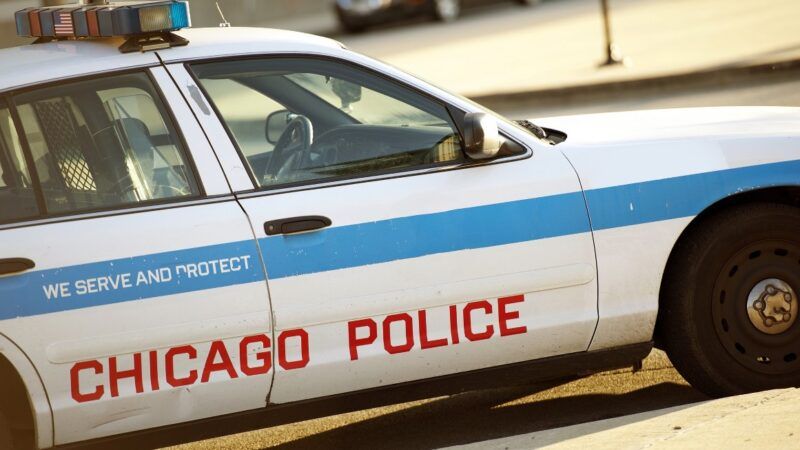Chicago Audit Finds ShotSpotter Alerts Rarely Lead to Evidence of Gun Crimes
The report followed media investigations into ShotSpotter's reliability and activist pressure on Chicago to cut its contract with ShotSpotter.

An audit of Chicago's contract with ShotSpotter, a company that claims its sound sensors can pinpoint the location of gunshots, found that ShotSpotter alerts rarely lead to valuable police leads or evidence of gun crimes.
The Chicago Office of Inspector General released a report today concluding that it did not find evidence that ShotSpotter technology was an effective tool for generating evidence of gun crimes. The report comes on the heels of several media investigations that have raised serious questions about ShotSpotter's accuracy and the integrity of its data. Meanwhile, Chicago city officials recently chose to extend the company's three-year, $33 million contract to 2023.
The inspector general's report examined Chicago Police Department (CPD) data related to ShotSpotter alerts, which are generated when the company identifies a probable gunshot with its network of microphones. In Chicago, the largest of roughly 100 cities where ShotSpotter is deployed, the sensor network covers 117 square miles.
The report found that, of roughly 50,000 such alerts that generated police activity between January 1, 2020 and May 31, 2021, only 4,500 resulted in police finding evidence of a gun-related criminal offense.
The report also finds that ShotSpotter data may change the way CPD members perceive and interact with people in neighborhoods where ShotSpotter alerts are frequent. "At least some officers, at least some of the time, are relying on ShotSpotter results in the aggregate to provide an additional rationale to initiate stop or to conduct a pat down once a stop has been initiated," the report concluded.
"Our study of ShotSpotter data is not about technological accuracy, it's about operational value," Deputy Inspector General for Public Safety Deborah Witzburg said in a press release. "If the Department is to continue to invest in technology which sends CPD members into potentially dangerous situations with little information—and about which there are important community concerns—it should be able to demonstrate the benefit of its use in combatting violent crime. The data we analyzed plainly doesn't do that."
The inspector general's findings track with a study released this spring by the MacArthur Justice Center at Northwestern's Pritzker School of Law. That study found that 89 percent of the time ShotSpotter issued an alert, CPD was dispatched to find no evidence of a shooting.
Activists in Chicago have been calling on city officials to drop its contract with ShotSpotter, following the police shooting of 13-year-old Adam Toledo in March.
The Associated Press reported last week on the case of Michael Williams, a Chicago man who was jailed for 11 months, accused of murder based on ShotSpotter data. However, the A.P. found that the alleged gunshot was originally identified by Shotspotter's algorithms as a firecracker before an employee changed it to a gunshot. The location of the noise was also shifted more than a mile away from where it was originally sourced. The case against Williams was ultimately dismissed by a judge for lack of evidence.
"The company's methods for identifying gunshots aren't always guided solely by the technology," the A.P. reported. "ShotSpotter employees can, and often do, change the source of sounds picked up by its sensors after listening to audio recordings, introducing the possibility of human bias into the gunshot detection algorithm. Employees can and do modify the location or number of shots fired at the request of police, according to court records. And in the past, city dispatchers or police themselves could also make some of these changes."
Vice also reported on the ShotSpotter system last month, and reported that a review of court filings "suggests that the company's analysts frequently modify alerts at the request of police departments—some of which appear to be grasping for evidence that supports their narrative of events."
ShotSpotter has steadfastly denied that its system is unreliable or that it manipulates data.
"First, ShotSpotter forensic evidence is 100 percent reliable and based entirely on the facts and science," the company said in a response to Vice's story. "ShotSpotter has never altered the information in a court-admissible detailed forensic report based on fitting a police narrative."
CPD has also continued to defend the ShotSpotter system.
"In order to reduce gun violence, knowing where it occurs is crucial. ShotSpotter has detected hundreds of shootings that would have otherwise gone unreported," Tom Ahern, a CPD spokesperson, said in a statement after the OIG report's release. "ShotSpotter is among a host of tools used by CPD to keep the public safe and ultimately save lives. Using ShotSpotter, CPD receives real-time alerts of detected gunfire enabling patrol officers to arrive at a precise location of a shooting event quickly. Instead of relying on the historically low rate of 911 calls, law enforcement can respond more quickly to locate and aid victims, identify witnesses and collect forensic evidence."


Show Comments (51)